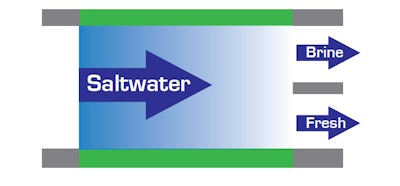
Although electricity and water do not generally go well together, researchers at MIT had the exact opposite idea.
Hoping to help solve shortages of potable water in third-world nations, a team of students under the guidance of chemical engineering and mathematics professor Martin Bazant have created an experimental version of a system that relies on electrical current rather than filter membranes to remove salt from water.
Known as shock electrodialysis, the process generates electrical shockwaves that do the work of separating brine from fresh.
According to a recent report by writer Chloe Olewitz, published in November on Yahoo Finance, this is not the first time electricity has been used to filter water. She writes: "The MIT team credits Juan Santiago at Stanford University for first discovering the use of a shockwave to separate salt concentration in water, but Santiago's discovery wasn't used for desalination applications until now."
Traditional desalination technology requires high water pressure and dense filter media to get the job done, which in turn generate often-prohibitive energy costs and require rigorous maintenance regiments. Those drawbacks have rendered processes such as reverse osmosis and nano-filtration economically impractical for many widespread applications.
In a separate report published on new.mit.edu, Bazant explained the technology represents "a fundamentally new and different separation system." And unlike most other approaches to desalination or water purification, he adds, this one performs a "membraneless separation" of ions and particles.
Although it remains to be seen whether or not the technology can be adapted to high-volume applications, those involved with the project are hopeful the technology will someday be used in desalination plants, wastewater treatment facilities and other possible applications, maybe even pools and spas.
According to the Yahoo story: "The next step in bringing shock electrodialysis to real world desalination and water purification applications will require the design of a system developed specifically for practical testing on that scale."





































